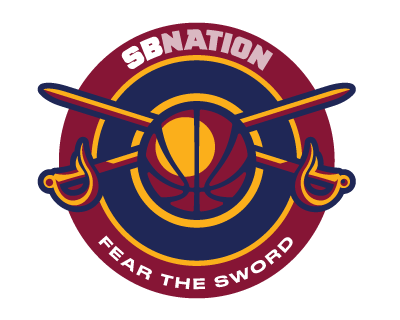/cdn.vox-cdn.com/uploads/chorus_image/image/73429572/2066794122.5.jpg)
The Cleveland Cavaliers are a month into their offseason. They’ve accomplished their main goal of signing Donovan Mitchell to an extension. However, they haven’t added to the roster outside of drafting Jaylon Tyson. The Cavs likely aren’t done supplementing their roster before next season.
Given the complexity of the salary cap, we’ve partnered with SalarySwish to use their data and answer any questions you might have about the Cavs’ financial situation.
Below is the live, updating table displaying what Koby Altman and company will be working with as they try to improve the roster. This is worth bookmarking as the table will automatically update throughout the summer with the Cavs’ offseason moves.
Cavs roster, salaries, draft picks, cap space and more
Below is SalarySwish’s table on the Cavs.
Now, because that is a lot of data, let’s dive into a few key pieces of context and what it means, and try to answer a few questions.
FAQ
What is the Cavs cap situation for next season?
The Cavs currently sit nearly where they were at the start of the offseason. Jaylon Tyson’s $3.3 million contract for next season is the only addition. The extensions that they signed Mitchell, Evan Mobley, and Jarrett Allen to don’t alter the books for this upcoming season. Mitchell and Mobley’s extension comes into play for the 2025-26 season while Allen comes in for the 2026-27 season.
The NBA utilizes a soft salary cap, so just because the Cavaliers are currently over the cap by $20 million doesn’t mean they aren’t able to continue to exceed it. The Cavs still have their mid-level exception of $12,859,000 that they can spend in free agency. They can also spend over the cap on a contract extension to re-sign Isaac Okoro in restricted free agency.
The Cavaliers are $9.7 million away from the luxury tax. They are $17 million away from the first apron and almost $28 million from the 2nd apron.
What is the situation for seasons beyond 2024-25?
Cleveland’s salary will jump from the $160 million it is now to $181 million in 2025-26 and $185 million the following season. There’s only nine players under contract for the 2025-26 season and seven for the 2026-27 season.
The salary cap and the corresponding tax thresholds are expected to go up each season due to the TV contracts the league signed. The exact numbers aren’t known yet, but the extensions that come into effect will likely vault the Cavs into the luxury tax.
What happens when the Cavs enter the luxury tax?
The penalty for going into the luxury tax, but staying under the first and second aprons is just a financial penalty for this offseason. Teams can go over the luxury tax threshold using one of the exceptions that they have. This would mean that there are no huge logistical issues with the Cavs exceeding that line with their mid-level exception this off-season. There is however a repeater tax for teams that are in the tax three out of four seasons.
The Cavs will not have access to the full mid-level exception next season if they are over the luxury tax line at the start of the next offseason. Additionally, the Cavs aren’t able to execute sign-and-trades this season if that player takes them or keeps them above the first apron. Teams in the first apron have stricter rules on who they can sign mid-season and tighter rules regarding the incoming salary in trades.
Teams in the second apron do not have the taxpayer midlevel exception, have stricter guidelines on trades, and can have their draft pick moved to a later spot if they are repeatedly in the second apron.
Isaac Okoro’s restricted free agency
Okoro will enter restricted free agency this season due to his rookie-scale contract ending. This means that Okoro is able to negotiate a contract with another team and get an offer sheet from them. The Cavs have a right to match the offer. If they did so, that would mean that Okoro would remain a Cavalier under the contract terms he procured from another team.
If the Cavs elect to not match, Okoro would then be under contract with the team he signed the offer sheet with.
The Cavs extended a qualifying offer to Okoro which is what made him a restricted free agent. If he doesn’t sign a multi-year deal with the Cavs or another team, he could return to Cleveland on the qualifying offer which is worth $11.8 million for just this upcoming season. He would then be an unrestricted free agent next summer.
What draft picks can the Cavs trade?
The Cavs are not able to trade away a first-round pick without getting one in return due to the Stepien Rule. This rule requires a team to have a first-round pick in every other draft. Cleveland sent out their own firsts for 2025, 2027, and 2029 in the Mitchell trade. They own a first in the even years (although the Utah Jazz have a right to pick swap in 2026 and 2028).
Even though they have a first this year and in 2026, 2028, and 2030, they aren’t able to trade them unless they get a first-rounder for those years back in the trade or have acquired first(s) that would prevent them from going two seasons in a row without having a first-round pick. The only first-round pick they can currently trade is their 2031 selection.
The Stepien rule doesn’t apply to second-round picks. The Cavs could trade any second-rounder that they have in their possession which includes the following:
- 2025 Cavs second
- 2025 Bucks second
- 2026 Cavs second
- 2027 Cavs second
- 2027 Nuggets second
- 2028 Cavs second
- 2029 Cavs second
If you found this page useful, please bookmark it and/or share, and if you have any questions or information you’d like to see included, let us know in the comments below.

Loading comments...